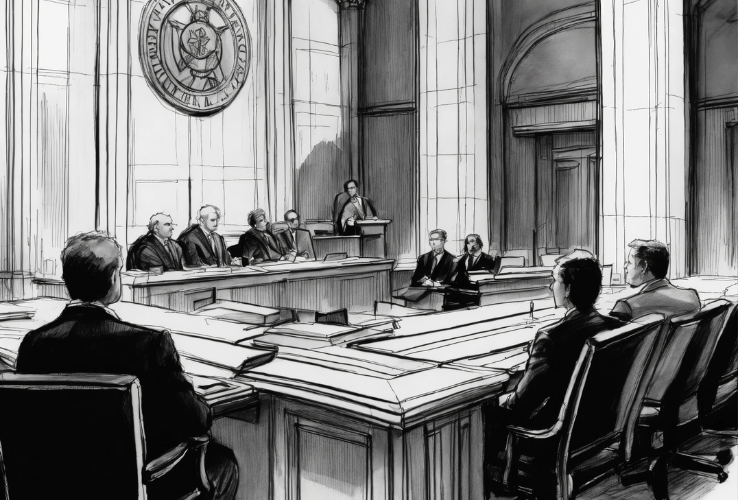Blockchain for Transparent Governance
In a world where trust in public institutions is increasingly scrutinized, governments are under pressure to ensure accountability, transparency, and efficiency in their operations. Traditional systems, often plagued by bureaucratic inefficiencies and opaque processes, struggle to meet these demands. Enter blockchain technology—a transformative innovation that promises to redefine governance by creating systems that are transparent, tamper-proof, and highly efficient.
While blockchain is often associated with cryptocurrencies, its applications in governance are far-reaching and impactful. From fighting corruption to streamlining public sector processes, blockchain is enabling a new era of transparent governance.

The Case for Blockchain in Governance
Transparency has long been a cornerstone of effective governance. Citizens must trust that public institutions operate fairly, equitably, and in their best interest. However, traditional systems often lack mechanisms for real-time accountability, leaving room for inefficiencies, fraud, and corruption. Blockchain technology addresses these challenges by creating immutable, decentralized ledgers that provide complete transparency and security.
At its core, blockchain operates as a distributed ledger that records transactions across a network of computers. These records are time-stamped, encrypted, and immutable, ensuring that data cannot be altered or deleted without consensus from the network. For governments, this means the ability to create systems where every transaction, decision, or action can be traced and verified.
Real-World Applications of Blockchain in Governance
1. Fighting Corruption and Enhancing Transparency
One of the most promising applications of blockchain is in combating corruption. By providing an unalterable record of transactions, blockchain ensures that public funds are used as intended and prevents tampering with financial records.
For example, in Honduras, blockchain has been used to secure land ownership records, preventing fraudulent claims and tampering. Similarly, Georgia’s National Agency of Public Registry uses blockchain to enhance the transparency of its land registry, reducing disputes and increasing trust among citizens.
2. Streamlining Procurement Processes
Public procurement is a critical area where inefficiencies and corruption are rampant. Blockchain can create transparent bidding and contract management systems, ensuring that every step of the procurement process is recorded and accessible.
The city of Dubai, for instance, has implemented blockchain for government procurement, reducing fraud and cutting administrative costs. By automating contract execution through smart contracts, the system ensures that payments are only made when terms are met.
3. Voting Systems
Blockchain-based voting systems have the potential to revolutionize elections by enhancing security, transparency, and accessibility. By recording votes on a blockchain, governments can create tamper-proof election records, ensuring that results are accurate and verifiable.
In 2018, West Virginia conducted a pilot blockchain-based mobile voting program for overseas military personnel. The initiative demonstrated how blockchain could enhance voter participation while maintaining security and transparency.
4. Social Welfare Programs
Governments often struggle to ensure that welfare benefits reach the intended recipients. Blockchain can provide transparency in fund distribution, preventing fraud and ensuring accountability. For example, the United Nations World Food Programme (WFP) uses blockchain to distribute aid to refugees in Jordan. By eliminating intermediaries, the program ensures that resources reach those in need while reducing costs.
Benefits of Blockchain for Governance
Transparency and Accountability
Blockchain creates an environment where every action is recorded and visible, ensuring that public officials and institutions remain accountable. Citizens can access and verify records, fostering trust in government operations.
Fraud Prevention
By eliminating centralized points of control, blockchain reduces opportunities for fraud and corruption. The immutability of blockchain records ensures that tampering is virtually impossible.
Cost Efficiency
Blockchain can streamline administrative processes, reducing the time and cost associated with tasks such as verifying documents, executing contracts, or distributing funds.
Improved Trust
By creating systems that are inherently transparent and secure, blockchain fosters greater trust between governments and their citizens. This trust is essential for social stability and economic growth.

Challenges to Blockchain Adoption in Governance
Despite its potential, implementing blockchain in governance is not without challenges:
Scalability
Blockchain systems can be resource-intensive, and scaling them to handle the vast amounts of data generated by governments is a significant technical challenge.Regulatory and Legal Frameworks
Governments must develop regulatory frameworks to govern the use of blockchain, ensuring compliance with existing laws while addressing privacy and security concerns.Interoperability
Integrating blockchain systems with existing government infrastructure requires significant effort to ensure compatibility and seamless operation.Public Acceptance
Educating citizens and public officials about blockchain’s benefits and addressing misconceptions are critical for widespread adoption.
The Future of Blockchain in Governance
The adoption of blockchain in governance is still in its infancy, but its trajectory is promising. As the technology matures and governments gain experience with pilot programs, broader implementations are expected. Emerging trends include:
Decentralized Identity Systems
Blockchain-based identity systems can provide citizens with secure, verifiable identities, streamlining access to government services.Global Collaboration
Cross-border blockchain initiatives, such as trade agreements or climate action monitoring, can enhance international cooperation and transparency.AI Integration
Combining blockchain with artificial intelligence can unlock new possibilities for predictive governance and automated decision-making.

